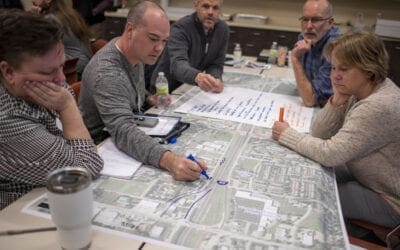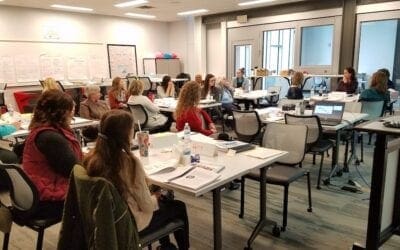Navigating the Holidays During COVID-19

The holidays are fast approaching, and in a normal year, we’d be making plans to see family and friends and gathering to share food and gifts. After months of not seeing loved ones due to the ongoing pandemic, many of us are grappling with the decision to gather or stay home for the holidays.
We understand the challenge of making the decision to see loved ones this holiday season. We can still have meaningful celebrations this year, even with modifications to our usual plans. Here are some considerations to help you navigate your holiday plans during COVID-19:
1. The best thing you can do to keep yourself and your loved ones safe is to stay home and celebrate with the people you live with.
If you decide to go this route, know that it doesn’t mean the holidays are canceled or that they can’t still be full of tradition. Get creative with your modifications!
For example, drop off gifts on loved ones’ doorsteps before the holiday and coordinate a virtual unwrapping. Prepare a favorite dish or treat and drop it off with family and friends. Create a new tradition, such as going on a holiday decoration walk throughout your neighborhood or make holiday crafts, cards, or cookies to send or deliver to family, friends, and neighbors.
Find more tips for celebrating safely this holiday season in our blog ‘Safely Celebrate the Holiday Season’.
2. The second best thing you can do is to take steps to reduce the risk of spread if you do decide to gather with people you don’t live with.
Things everyone can do to make the holidays safer:
- Wear a mask over your mouth, nose, and chin to stop the spread of COVID-19 and protect others and yourself.
- This includes outdoors and indoors when socializing or in close contact with people you do not live with.
- Stay at least 6 feet away, or two arm lengths, from others who do not live with you.
- Regardless of being indoors or outdoors, you are more likely to get or spread COVID-19 when you are in close contact with others for a total of 15 minutes or more.
- Avoid crowded, poorly ventilated indoor spaces.
- Gatherings and activities held outdoors are safer than indoor gatherings. If you do gather indoors, keep it small and create airflow by opening up a window or door.
- Wash your hands frequently with soap and water for 20 seconds.
- If water and soap aren’t available, use hand sanitizer that contains at least 60% alcohol.
- Avoid touching your mouth, nose, and eyes.
- Get a flu shot to help protect you and your family, friends, and community from getting and spreading the flu.
Attending or Hosting a Winter Holiday Celebration
In addition to following the steps that everyone can take to make the holidays safer, consider these additional steps if attending or hosting a gathering to make your celebration safer:
- Have a conversation with the host or your guests ahead of time to understand and establish expectations for safely celebrating together.
- Stay home if you have COVID-19, symptoms of COVID-19, are waiting for COVID-19 test results, or have been exposed to someone with COVID-19.
- Avoid activities that require the removal of masks, such as eating or drinking. However, if you do decide to do so, bring your own food, drinks, places, cups, and utensils. If this isn’t possible, have one person serve food. Use disposable plates and utensils and have a no-touch garbage can handy. Additionally, limit people around the food.
- Wear a mask indoors and outdoors.
- Avoid shouting or singing.
- Limit the number of guests.
- Have a small, local, outdoor celebration with family and friends, weather-permitting.
- Have extra masks on hand and hand washing and sanitizing stations.
- Clean and disinfect frequently touched surfaces.
- Open windows and doors, if possible, to increase airflow.
- Cancel your gathering or consider staying home if you or someone you live with is sick or has been exposed to COVID-19.
- Know that it’s okay to postpone or cancel your gathering, or decide not to go. Do what’s best for you.
Considerations to Keep in Mind
How COVID-19 Spreads. The virus that causes COVID-19 spreads via respiratory droplets, or small particles, that are produced when an infected person coughs, sneezes, sings, talks, or breathes. It is most commonly spread between people who are in close contact with one another (within about six feet or two arm lengths.)
These droplets can also land on surfaces and be transferred by touch. A person may become infected with COVID-19 after touching an infected surface and then touching their mouth, nose, or eyes. This is not thought to be the main mode of COVID-19 spread.
It’s also possible for COVID-19 to be spread through airborne respiratory particles. Growing evidence shows that airborne particles can remain suspended in the air, travel distances beyond 6 feet, and be breathed in by others. Because of this, indoor environments without good ventilation present an increased risk of transmission.
A Negative Test is Not a Green Light. If you’re going to gather for the holidays, the best course of action is to self-quarantine for 14 days before. Getting tested and receiving a negative test does not mean you’re in the clear. Here’s why:
- Getting tested is a stamp in time. You can still contract or incubate the virus after testing.
- False negatives can occur during sample collection where not enough of the virus was captured to detect.
- The virus takes time to replicate within your body and build up to a level that is detectable. You could test negative one day and positive the next.
This year has been hard, so naturally, we want to be surrounded and nourished by the presence of our loved ones. If you’re having a hard time deciding whether to gather with family and friends this holiday season or stay home, know you’re not alone. We hope the information provided helps you navigate the holidays. We all have a role to play in keeping ourselves and our loved ones safe.
If traveling is in the cards for your holiday plans, check out our tips for staying safe (Holiday Travel Considerations).
Source
Archives
- December 2025 (1)
- November 2025 (2)
- September 2025 (1)
- July 2025 (2)
- June 2025 (3)
- April 2025 (2)
- February 2025 (1)
- January 2025 (2)
- December 2024 (1)
- September 2024 (2)
- August 2024 (2)
- July 2024 (1)
- June 2024 (1)
- February 2024 (1)
- July 2023 (1)
- March 2023 (1)
- October 2022 (1)
- September 2022 (1)
- August 2022 (1)
- July 2022 (2)
- June 2022 (2)
- May 2022 (1)
- April 2022 (4)
- March 2022 (1)
- February 2022 (1)
- January 2022 (1)
- December 2021 (4)
- November 2021 (3)
- September 2021 (2)
- August 2021 (3)
- July 2021 (2)
- June 2021 (1)
- May 2021 (2)
- March 2021 (1)
- December 2020 (6)
- November 2020 (8)
- October 2020 (4)
- September 2020 (7)
- August 2020 (3)
- July 2020 (11)
- May 2020 (2)
- April 2020 (4)
- March 2020 (1)
Categories
- Communicable Disease (5)
- Clinical Services (19)
- Clinical Servcies (1)
- Health Promotions (74)
- Emergency Preparedness (8)





